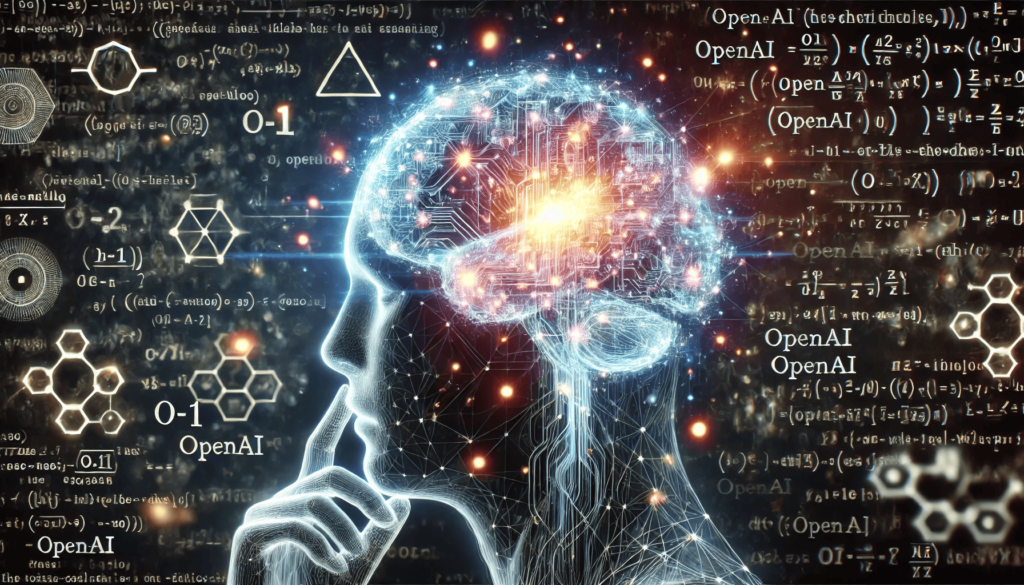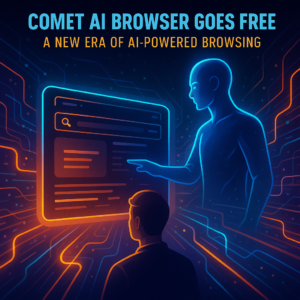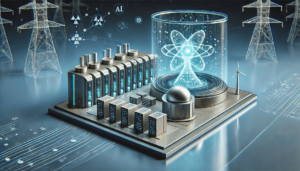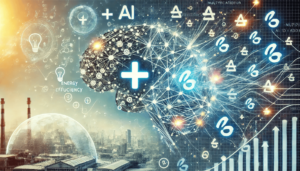OpenAI’s o1: A New Era in AI Reasoning and Its Implications

The o1 model symbolizes a new era in artificial intelligence reasoning and problem-solving.
- What are the key advancements and capabilities of OpenAI’s o1 model?
- How might the o1 model impact various sectors like education, professional fields, and ethics?
- What are the potential future scenarios and challenges associated with the deployment of advanced AI systems like o1?
Artificial intelligence has reached a new milestone with the introduction of OpenAI’s o1, a large language model (LLM) trained using reinforcement learning to perform complex reasoning tasks. As discussed on OpenAI’s research blog, o1 represents a significant advancement in AI capabilities, showcasing remarkable performance in competitive programming, mathematics, and science benchmarks. This article delves into the features of o1, explores its potential implications across various sectors, and critically examines the future scenarios that this technology might unfold.
Unveiling o1: Thinking Before Answering
One of the most notable aspects of o1 is its ability to “think before it answers.” Unlike traditional language models that generate responses based on immediate context, o1 produces an internal chain of thought, reasoning through problems step by step before providing an answer. This approach mirrors human cognitive processes and allows the model to tackle complex tasks more effectively.
Reinforcement Learning and Chain of Thought
OpenAI trained o1 using a large-scale reinforcement learning algorithm that teaches the model productive thinking patterns. By honing its chain of thought, o1 learns to refine its strategies, recognize and correct mistakes, and break down intricate steps into simpler components. This method contrasts with traditional LLM pretraining, focusing on the quality of reasoning rather than the quantity of data.
The model’s performance improves consistently with more reinforcement learning (train-time compute) and more time spent thinking (test-time compute). This indicates that o1’s reasoning capabilities are scalable and can be enhanced further with additional computational resources.
Stellar Performance Across Domains
o1’s capabilities are not just theoretical; they have been rigorously tested across various challenging benchmarks.
Competitive Programming
In the realm of competitive programming, o1 ranks in the 89th percentile on Codeforces, a platform known for its demanding algorithmic problems. This places o1 among the top performers, demonstrating its ability to handle complex coding tasks that require advanced problem-solving skills and algorithmic understanding.
Mathematics
On the American Invitational Mathematics Examination (AIME) 2024, a test designed to challenge the brightest high school math students in the United States, o1 averaged a score that places it among the top 500 students nationally. This achievement exceeds the cutoff for the USA Mathematical Olympiad, highlighting o1’s advanced mathematical reasoning.
Science
o1 also excelled in GPQA Diamond, a benchmark of PhD-level physics, biology, and chemistry problems. Remarkably, the model surpassed human experts with doctorates in these fields. This suggests that o1 not only understands complex scientific concepts but can also apply them effectively to solve high-level problems.
Implications for the Future
The introduction of o1 has profound implications across multiple sectors. Here, we explore several perspectives on how this technology might impact the future.
Education and Learning
o1’s advanced reasoning capabilities could revolutionize education. As an AI tutor, o1 can provide personalized learning experiences, helping students understand complex subjects by breaking down problems into manageable steps. This could democratize access to high-quality education, especially in areas where expert teachers are scarce.
However, there are concerns about academic integrity. If students use AI to complete assignments or exams, educators may need to rethink assessment methods to focus more on critical thinking and application rather than rote memorization.
Professional Fields
In professional domains like engineering, medicine, and law, o1-like models could assist experts by providing insights, analyzing vast amounts of data, and suggesting solutions that might not be immediately apparent. This could enhance productivity and innovation across industries.
On the other hand, the potential for job displacement cannot be ignored. As AI systems become more capable, some roles may become redundant. It will be crucial to develop strategies to mitigate the impact on the workforce, such as retraining programs and policies that encourage human-AI collaboration.
Ethical Considerations
The enhanced reasoning abilities of AI models like o1 bring ethical considerations to the forefront. OpenAI notes in their blog post that chain of thought reasoning offers new opportunities for alignment and safety. By integrating safety policies into the model’s reasoning process, o1 demonstrates improved robustness against harmful instructions and adversarial prompts.
However, there is a risk of misuse. Advanced AI could be exploited for malicious purposes, such as developing sophisticated cyberattacks or spreading disinformation. Ensuring that AI systems are aligned with ethical guidelines and are transparent in their decision-making processes is paramount.
Transparency and Trust
OpenAI has chosen not to display the raw chain of thought to users, balancing competitive advantage and safety concerns. While this approach prevents potential misuse, it raises questions about transparency. Users and stakeholders may demand more visibility into how AI models arrive at their conclusions, especially in high-stakes scenarios.
Developing methods to audit and interpret AI reasoning without compromising safety will be a critical area of research. Building trust in AI systems requires a delicate balance between openness and security.
Potential Challenges
While o1’s capabilities are impressive, several challenges need to be addressed to maximize the benefits and minimize the risks.
Over-Reliance on AI
There is a risk that individuals and organizations may become over-reliant on AI systems, potentially eroding human expertise and critical thinking skills. It is essential to maintain a balance where AI serves as a tool to augment human abilities rather than replace them entirely.
Accessibility and Inequality
Advanced AI technologies may not be accessible to everyone, potentially exacerbating existing inequalities. Those with access to cutting-edge AI could gain significant advantages, leading to a widening gap between different socioeconomic groups. Efforts should be made to democratize access to AI and invest in education and infrastructure that enable broader participation.
Regulatory and Legal Frameworks
The rapid advancement of AI technologies like o1 outpaces current regulatory and legal frameworks. Policymakers will need to develop new regulations that address issues such as accountability, liability, and ethical use. International cooperation may also be necessary to establish global standards and prevent a regulatory patchwork that hinders innovation.
Future Scenarios
Considering the trajectory of AI development, several future scenarios emerge.
AI as a Collaborative Partner
In an ideal scenario, AI models like o1 become collaborative partners, working alongside humans to solve complex problems. In fields like healthcare, AI could assist doctors in diagnosing diseases or developing treatment plans, while in environmental science, AI could help analyze climate data to inform policy decisions.
Redefining Education
Education systems might evolve to integrate AI tools as standard resources. Teaching methods could shift towards fostering creativity, critical thinking, and emotional intelligence—areas where humans excel—while leveraging AI for information processing and problem-solving.
Ethical AI as a Standard
As AI becomes more integrated into society, ethical considerations could become a core component of AI development. Models would be designed with built-in ethical frameworks, transparency mechanisms, and fail-safes to prevent misuse.
Potential Risks
Alternatively, if ethical and regulatory challenges are not adequately addressed, there could be negative outcomes. Misaligned AI systems might make decisions that conflict with human values, or advanced AI could be weaponized in cyber warfare. These risks underscore the importance of proactive governance and responsible innovation.
Shaping Tomorrow with AI Today
OpenAI’s o1 marks a significant step forward in artificial intelligence, demonstrating advanced reasoning capabilities that rival and even surpass human expertise in certain domains. As highlighted on OpenAI’s research blog, the development of o1 opens up exciting possibilities for innovation across various fields.
However, with great power comes great responsibility. The implications of deploying such advanced AI systems are far-reaching, encompassing ethical, social, and economic dimensions. It is imperative for developers, policymakers, and society at large to engage in thoughtful dialogue about the role of AI in our future.
By fostering collaboration between humans and AI, prioritizing ethical considerations, and ensuring equitable access, we can harness the potential of models like o1 to drive progress and improve lives while mitigating risks. The journey ahead is complex, but with careful navigation, the integration of advanced AI into society can be a catalyst for positive change.




